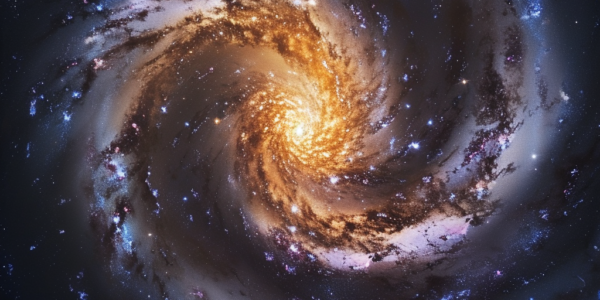Astrophysicist Leads Development of Groundbreaking Space Probe for Gravitational Wave Detection
Learn about the groundbreaking space probe, LISA, being developed by theoretical astrophysicist Sean McWilliams at West Virginia University. Scheduled for launch in 2035, LISA aims to revolutionize our understanding of the universe by detecting and measuring gravitational waves generated by cataclysmic events like black hole collisions and neutron star mergers.
New Study Reveals Potential ‘Glitch’ in Einstein’s Theory of Relativity
A recent study unveils a ‘cosmic glitch’ in Einstein’s theory of relativity, challenging our understanding of gravity on cosmic scales. This unexpected finding could offer new insights into the universe’s mysteries, potentially reshaping established notions in astrophysics.
Event Horizon Telescope Aims to Capture First-Ever Black Hole Movie
The Event Horizon Telescope captured the first-ever image of a black hole five years ago, and now astronomers are attempting to create the first-ever movie of a black hole. More than 400 scientists are collaborating on this project, aiming to make the video by 2026. The appearance of black hole M87* changes over time, and EHT is working on capturing these changes to create a moving picture.
April’s Total Solar Eclipse: A Scientific Bonanza
April’s total solar eclipse is expected to be a scientific bonanza, offering a rare opportunity for new spacecraft and telescopes to study the event. The moon’s close proximity to Earth will provide an extended period of darkness, and the sun’s increased activity could result in dramatic bursts of plasma. Scientists are eager to take advantage of totality’s densely populated corridor from Mexico to Canada to conduct experiments and gain a better understanding of our planet.
Mars influencing Earth’s deep oceans with ‘giant whirlpools,’ scientists say
New research suggests that Mars may be influencing deep ocean currents on Earth, leading to the formation of ‘giant whirlpools.’ Scientists analyzed sediments to look back tens of millions of years into Earth’s past, revealing 2.4 million-year climate cycles linked to the interactions of Mars and Earth orbiting the Sun. This phenomenon, known as ‘resonance,’ affects the shape of their orbits and translates to periods of increased solar energy and warmer climate on Earth, correlating with more vigorous ocean currents. However, these natural climate cycles are not linked to the rapid heating the world is experiencing today due to human activities. The study’s findings provide valuable insights into the forces driving deep ocean currents and their impact on the Earth’s climate.
Upcoming Total Solar Eclipse to Provide New Insights into Sun’s Mysterious Corona
On April 8, 2024, a 115-mile-wide strip of North America will be plunged into darkness as the moon slips in front of the sun, creating a rosy, fluffy crown of flame visible from Mazatlán, Mexico, to Newfoundland, Canada. This upcoming total solar eclipse is generating excitement not only among spectators but also among scientists eager to study the solar corona, the mysterious outer atmosphere of the sun. The solar corona has long been a subject of fascination and mystery for astronomers, and the upcoming eclipse, along with new sun probes, is poised to revolutionize our understanding of the sun and its enigmatic corona.
Physicists Propose New Theory of Gravastars Nested Within Black Holes
Recent discoveries in the field of physics have unveiled a new theory proposed by physicists at Goethe University Frankfurt, shedding light on the enigmatic interiors of black holes. The theory introduces the concept of gravastars, which are speculated to resemble a matryoshka doll. This groundbreaking theory challenges the traditional understanding of black holes and offers new insights into the nature of celestial bodies.
The LISA Mission: Unveiling the Echoes of Black Hole Mergers
The European Space Agency is preparing to launch the LISA mission, a groundbreaking endeavor set to detect gravitational waves that originated at ‘the dawn of time.’ This ambitious mission will involve building a trio of satellites to trail Earth around the Sun, marking a significant leap in our ability to observe and understand cosmic phenomena. With the potential to unlock new insights into cataclysmic events in the cosmos, such as the merger of supermassive black holes, the LISA mission represents a pivotal step forward in our quest to unravel the mysteries of the universe.
Orbital Resonance: The Cosmic Dance of Planets in Harmony
Orbital Resonance: The Cosmic Dance of Planets in Harmony By Lexi Mural February 3, 2024 Planets orbiting their parent stars often exhibit remarkable patterns in their orbits, creating a mesmerizing gravitational dance known as orbital resonance. Recently, astronomers studying a…
Study Explores Dark Matter’s Role in Galactic Dynamics
Dark matter, the elusive substance that makes up much of the matter in the universe, continues to intrigue astronomers. A recent study, detailed in the pre-print server arXiv, delves into the speed at which dark matter can move and its…










